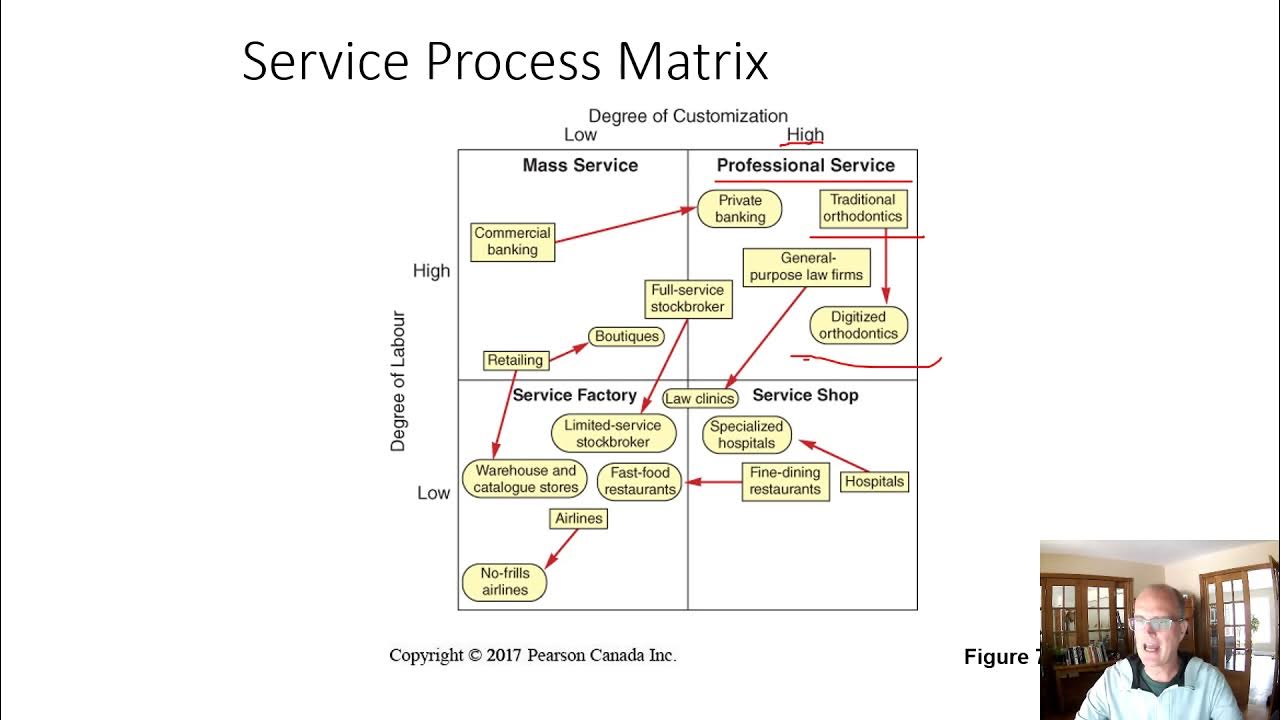Service Design | ITIL V3 Foundation | ITIL Basics | Simplilearn
Summary
TLDRThe video discusses the purpose and objectives of IT service design, emphasizing alignment with governance policies and enhancing customer satisfaction. Key roles, such as the process manager and practitioner, are highlighted alongside their responsibilities in managing resources and ensuring effective collaboration. The four perspectives driving IT service design—partner or supplier, people, product or technology, and process—are outlined for successful service delivery. Additionally, the importance of the Service Design Package (SDP) is addressed, documenting all aspects of IT services during design, transition, and retirement phases. Overall, the video underscores the need for continual service improvement and effective stakeholder engagement.
Takeaways
- 🎯 Service design aims to align IT services with policies, practices, and processes for high-quality delivery and customer satisfaction.
- 🛠️ The objective of service design is to design IT services efficiently, avoiding major improvements while identifying opportunities for enhancement.
- 🔄 Continual service improvement is a critical component in all service design activities to maintain effectiveness.
- 📊 The scope of service design includes interpreting business requirements, managing information systems, and implementing metrics for effectiveness.
- 💰 Service design benefits businesses by lowering total cost of ownership (TCO) and improving service delivery quality and consistency.
- 🔗 Two key roles in service design are the process manager and process practitioner, each with distinct responsibilities to ensure smooth service operations.
- 👥 The process manager collaborates with the process owner to plan, coordinate, and manage resources for service processes.
- 📋 The process practitioner ensures that all activities are carried out effectively, working closely with stakeholders and maintaining accurate records.
- 🔑 The four P's of IT service design include Partner/Supplier, People, Product/Technology, and Process, each influencing service delivery success.
- 📄 A Service Design Package (SDP) documents all aspects of an IT service and is essential for introducing new services or major changes.
Q & A
What is the primary purpose of service design?
-The primary purpose of service design is to align IT services with governing policies, IT practices, and processes, while ensuring high-quality service delivery, cost-effectiveness, and customer satisfaction.
How does service design contribute to continual service improvement?
-Service design includes continual service improvement in all activities to sustain effectiveness by identifying changing trends in business and recognizing opportunities for service enhancement.
What are the key responsibilities of a process manager in the service design phase?
-A process manager is responsible for planning and coordinating process activities, managing resources, coordinating with other process managers and service owners, and ensuring all activities are carried out effectively throughout the service life cycle.
What are the four P's of IT service design?
-The four P's are: Partner or Supplier, People, Product or Technology, and Process. Each perspective is crucial for effective service design and delivery.
Why is the service design package (SDP) important?
-The SDP documents all aspects of an IT service and is produced when a new service is offered or when significant changes are expected. It helps in ensuring a smooth transition to service delivery.
What should an SDP include?
-An SDP should include business requirements, service applicability, service acceptance criteria, service design and topology, service transition plans, and organizational readiness.
How does the people perspective influence IT service design?
-The people perspective focuses on ensuring that IT staff, customers, and stakeholders have the required knowledge and skills to perform their roles effectively.
What role does the product or technology perspective play in service design?
-The product or technology perspective considers the IT services, technology, and tools needed for effective service delivery and operational efficiency.
What is the significance of the process perspective in IT service management?
-The process perspective relates to the end-to-end delivery of services, focusing on process flow, activity responsibility, and dependencies, ensuring that services are delivered smoothly.
How do the responsibilities of a process practitioner differ from those of a process manager?
-A process practitioner ensures that all process activities are executed correctly, working with stakeholders to ensure effective contributions, while a process manager oversees the overall planning and coordination of process activities.
Outlines

此内容仅限付费用户访问。 请升级后访问。
立即升级Mindmap

此内容仅限付费用户访问。 请升级后访问。
立即升级Keywords

此内容仅限付费用户访问。 请升级后访问。
立即升级Highlights

此内容仅限付费用户访问。 请升级后访问。
立即升级Transcripts

此内容仅限付费用户访问。 请升级后访问。
立即升级5.0 / 5 (0 votes)






